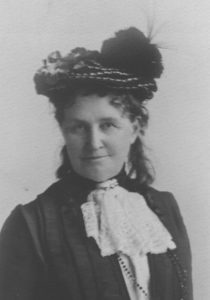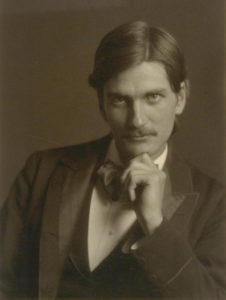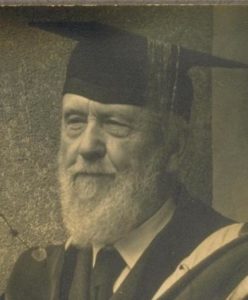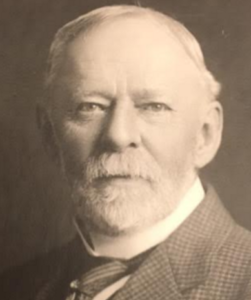Here are some notable people whose paths crossed with Paul Elder & Company.

Artists:
- Robert Wilson Hyde (1875-1951). Santa Barbara artist best known for his focus on medieval-style illuminated manuscripts and book illustration. He executed many unique works on leather and parchment, often with covers with integral metal hinges. He was active in Santa Barbara’s social circles, including dramatic productions where he was both an actor and a set designer.
- Harold M. Sichel (1881-1948). Illustrator and painter. Born in Benicia, California, he studied in San Francisco at the Mark Hopkins Institute under Arthur Mathews. Elder used his work frequently for books, calendars and other ephemera.
- Audley B. Wells (1887-1971). Artist and illustrator. Born in Missouri, she moved to Los Angeles by 1900. In 1918 she was an Art and Drawing teacher in the Los Angeles and Pasadena schools.
- (William) Spencer Wright (b. 1875). Artist and illustrator.

Authors:
- Nellie Blessing Eyster (1836-1922). Paul Elder Sr’s maternal grandmother. She moved to California with Paul’s parents in the mid-1870s. She wrote several books and was an enthusiastic suffragette and campaigner for the temperance movement.
- Charles Keeler (1871-1937). Author, poet, naturalist, and evangelist for the California Arts & Crafts movement. Keeler wrote four books for Elder, including The Simple Home and San Francisco Through Earthquake and Fire, and was a frequent contributor to Impressions magazine.
- Bernard Maybeck (1862-1957). Architect of the Panama-Pacific International Exposition’s Palace of Fine Arts and Berkeley’s First Church of Christ, Scientist. He was the architect or consulting architect for four of Elder’s bookstores. Maybeck’s only book, The Palace of Fine Arts and Lagoon, was published by Elder.

Booksellers, Printers & Publishers:
- Bruce Brough (1860-1934). Friend and colleague of John Henry Nash from their days in Toronto. They worked together at the Sunset Press in 1900-01, and in 1903 were co-owners of the Twentieth Century Press (which became the Tomoye Press later that year).
- Herman A. Funke (1877-1959). Funke was the third printer at the Tomoye Press, from 1916 to 1917.
- John Howell (1874-1956). He began his career as a clerk in Elder’s store, leaving in 1912 to establish his own antiquarian bookshop.
- Charles Murdock (1841-1928). San Francisco printer. His firm printed many of Elder & Shepard’s books 1898-1903.
- Ricardo Juan Orozco (1872-1956). Orozco arrived in California from his native Mexico as an eighteen-year-old in 1890. He was the fourth and final printer at the Tomoye Press, from 1917 to 1918, and had a long career as a commercial typographer in San Francisco.
- Alexander M. Robertson (1855-1934). San Francisco bookseller whose store was just a few blocks from Elder’s. He also published many books under his own name, notably many of the Philopolis Press titles.
- David Seymour Stanley (1854-1907). A native of New York, Stanley had been a commercial printer in San Francisco since 1878. His D. S. Stanley Company merged with the E. D. Taylor Company in 1898, becoming the Stanley-Taylor Company. They printed many of Elder & Shepard’s books until 1903, and after 1909 did much of the Tomoye Press’s printing.
- John Bernhardt Swart (1886-1919). The son of German immigrants, Swart became printer at the Tomoye Press in mid-1911 upon the departure of John Henry Nash. He left Elder in 1916, two years before his early death at the age of thirty-three.
- Edward DeWitt Taylor (1871-1962). Taylor was the son of the renaissance man Dr. Edward Robeson Taylor (who in addition to being physician and lawyer, was also a politician, printer, poet, and author of five titles on the Paul Elder list). The younger Taylor founded the E. D. Taylor Company in 1896, which merged with D. S. Stanley in 1898 to form the Stanley-Taylor Company. They printed many of Elder & Shepard’s books from 1898 to 1903; John Henry Nash was employed at Stanley-Taylor twice during this period. After Elder and Nash returned from New York City in 1909, much of the printing was also farmed out to Stanley-Taylor.
